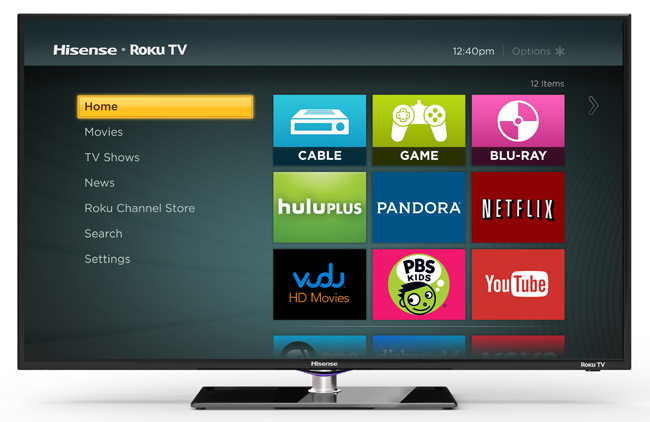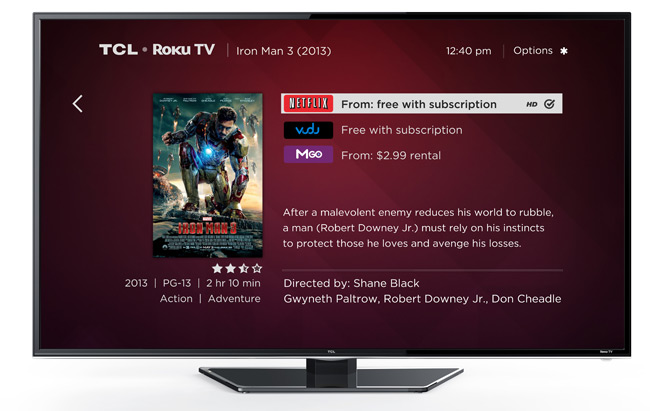If you're an upstart TV company trying to get into the Smart TV/media streaming game, it's tough to compete against the big boys. Samsung, LG, Panasonic and VIZIO have all built out robust media streaming and app platforms over the years, expending significant R&D dollars to do so. But there's another leader in the Smart TV space that isn't a TV maker at all.
Roku makes a streaming media box that can be used with any TV to add smart TV features: Netflix, Amazon VOD, Hulu+, YouTube, and literally hundreds of other streaming apps and games. But then you need a separate box (and remote) for streaming, which really isn't ideal. Roku recently released a streaming stick which brought the already small form factor of the Roku box down even smaller to the size of a USB thumb drive. Using the MHL option of HDMI, the Roku stick can be powered up from the very same HDMI port that connects it to a TV or projector. This effectively make the Roku box invisible to viewers, but still requires a separate remote to operate, with the exception of a few "Roku-ready" components, which integrated the Roku functions into the main device's remote.
But Roku has taken integration to the next level with their latest development: Roku TV. The streaming manufacturer announced this week that the Roku streaming platform will be fully integrated into select model year 2014 TVs from Chinese manufacturers TCL and HiSense. This is a win for all involved as it gives these lesser known, lower cost TV makers a Smart TV streaming platform which is on par with, if not better than, those of the larger TV manufacturers with minimal development costs. And it gives Roku a nice increase in streaming market share.
The Roku TV user interface is similar to that of the standard Roku box, however it replaces a TV's standard home screen so it adds icons for other sources such as a cable box or Blu-ray player to the standard channel-based Roku home screen.


The remote is also similar to a standard Roku remote with the addition of a prominent power button on top and volume toggle and mute button to the right. I did not see a channel up/down button on the Roku remote, but this could conceivably be done with the 4-way up/down/left/right button. Roku says that TV manufacturers have the option of deploying a headphone jack on the remote, a feature that we love on the Roku 3 standalone box. It is not yet clear whether TCL or Hisense will choose to implement this feature when the sets go into production.

Speaking with Roku representatives at CES this week, I learned that they are in talks with other TV makers to bring the Roku platform to more brands in the future. They were tight-lipped about who they are talking to, but I will say that companies like Sharp, JVC and Toshiba could definitely benefit from having the Roku platform on board. Also, smaller specialty Blu-ray player makers such as OPPO would be create candidates as well for Roku TV integration.
Details about pricing, delivery dates and which models of TCL and HiSense TV will include Roku capabilities will be forthcoming from the individual manufacturers.
More Information: